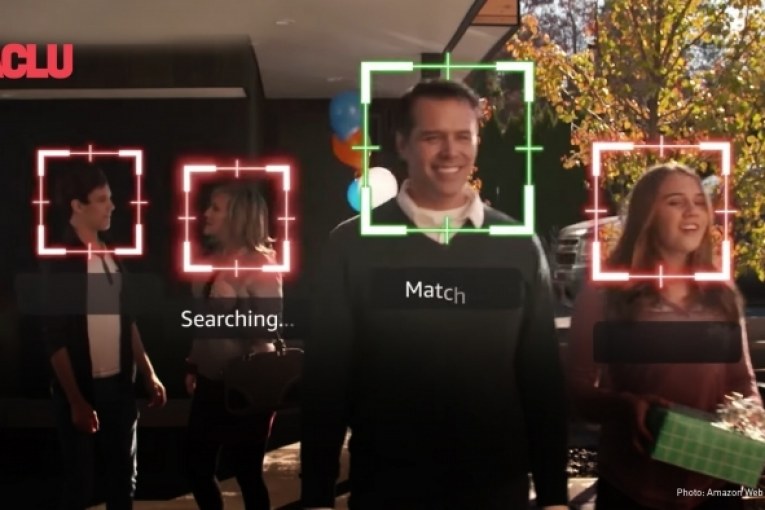

By Casey Rawlings and Paulina Buelna
WASHINGTON DC – The Congressional subcommittee on Crime, Terrorism, and Homeland Security held a virtual hearing about the concerns of facial recognition technology and its use by law enforcement here this week.
Facial recognition technology has become ubiquitous in public spaces throughout the US, and as its software advances, so do the controversies surrounding its use.
Racial justice advocates claim it invades the people’s 1st and 4th Amendments and is insufficient at identifying people of color, as well as poses a threat for abuse of power and exacerbating inequality.
On the contrary, proponents urge that facial recognition technology has imperative benefits for identifying missing people, mass shooters, and other threats.
At this week’s hearing, both sides of the conflict were presented, giving the general public insight as to where this new technology is headed.
Democratic member Rep. Sheila Jackson Lee opened the hearing by expressing her concerns about the racial inequities exacerbated by this new technology. She stated that most facial recognition systems are inaccurate for people of color; the darker your skin tone the higher the margin of error.
She presented a 2019 study conducted by the National Institute of Standards and Technology that showed empirical evidence that many facial recognition algorithms exhibit demographic  differentials that can worsen identification accuracy based on a person’s age, gender, or race.
differentials that can worsen identification accuracy based on a person’s age, gender, or race.
According to the study, systems varied widely on their accuracy, depending on the algorithm and type of search each used.
Chairperson Rep. Karen Bass explained some of the racist inaccuracies of facial recognition, noting “Asian and African American people were 100 percent more likely to be misidentified than white men… white males are the only ones who truly benefit from facial recognition technology.”
Another concern surfaced by public officials on the subcommittee was in reference to the potential infringement on first and fourth amendment rights.
For example, not only could law enforcement agencies use the system for surveillance of individuals not involved in suspicious activity, but they would also continually have access to images of law abiding citizens.
Barry Friedman, the faculty director at “The Policing Project,” explains, “law enforcement could use technology in violation of individuals first amendment rights, specifically freedom of association.”
Another concern mentioned by opponents involved the lack of documentation regarding where and when facial recognition technology is adapted.
As Gretta L. Goodwin explained, “many communities find facial recognition deployed in their neighborhoods without their prior consent or knowledge,” exacerbating potential for government abuse or misuse.
Similarly, concerns were raised about the lack of transparency and regulation of the use of the software.
Chairperson Bass specified that facial recognition technology frequently operates “with little transparency, minimal oversight, and questionable informational security.”
Additionally, individual employees have been found to test the software without the knowledge or approval of their superiors, compounding worries about misuse.
As Gretta L. Goodwin summarizes, “if law enforcement agencies do not know if or how their employees are using the technology, then they cannot ensure that the appropriate protections are in place.”
Voices like Brett Tolman, executive director of the conservative group ‘Right on Crime,’ constituted some of the proponents’ voices.
Benefits mentioned by supporters included greater certainty in law enforcement, safer borders, and enhanced efficiency.
Another virtue mentioned was the imperative identification skills that new PII technology holds, such as when it was used to identify insurrectionists from the capital raid in November, or to identify the shooter in the Capital Gazette massacre of 2018.
Others who spoke about the benefits of facial recognition technology include Friedman, who referenced a more reformist perspective.
He summarized that a “cost-benefit analysis” of the program can be adapted so that benefits outweigh costs by reducing the margin of error in identification. He stated that this could be achieved through “contacting vendors regarding settings to make sure vendors ensure accuracy and regulate inaccuracies.”
Facial recognition advocate Brett Tolman argued his support by debasing one of the most common arguments in opposition to PII software, being that it is a slippery slope to authoritarianism, describing, “while China’s unconscionable use of facial recognition technology being used to enhance and accelerate its undemocratic control of its citizenry is a warning of the costs of failure, I do not believe it is an inevitable consequence of any use of facial recognition technology by law enforcement.”
Despite Tolman’s villainization of China, speaker Kara Frederick from the Center for Technology Policy references contrasting statistics, stating, “the United States nearly matches China in its surveillance coverage, with 1 camera for every 4.6 people, compared to China’s 1 for 4.1 people.”
Other arguments made on behalf of the implementation of facial recognition technology include the wide array of organizations other than law enforcement who rely on this technology. As Tolman remarked, both the “US fish and wildlife service and the internal revenue service” use this software.
A final position of support Brett mentioned was that due to the unregulated accessibility of public images through social media, there are few instances in which a law enforcement officer will not have access to facial recognition technology.
Many people possess public profiles on social media which can lead law enforcement to gather public images of anyone under suspicion through their public profiles.
With the wide perspective of voices shared throughout the hearing, the subcommittee was able to listen to both points of view regarding the adoption of facial recognition technology. The conversation around this new technology is far from over and will continue to be discussed regarding its constitutionality.
The subcommittee is nowhere near finalizing a bill on the issue, with additional hearings to be scheduled.

Pretty compelling.